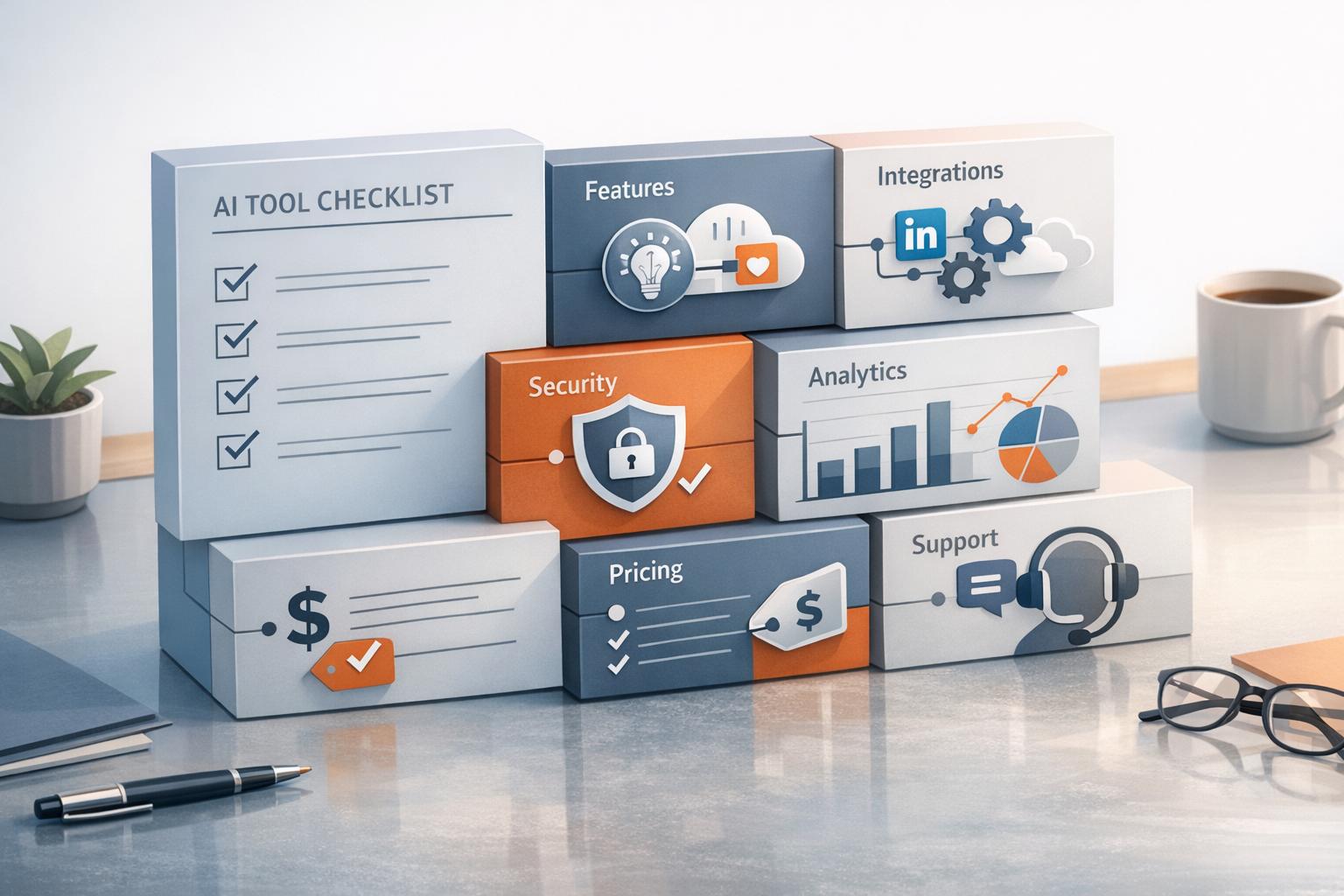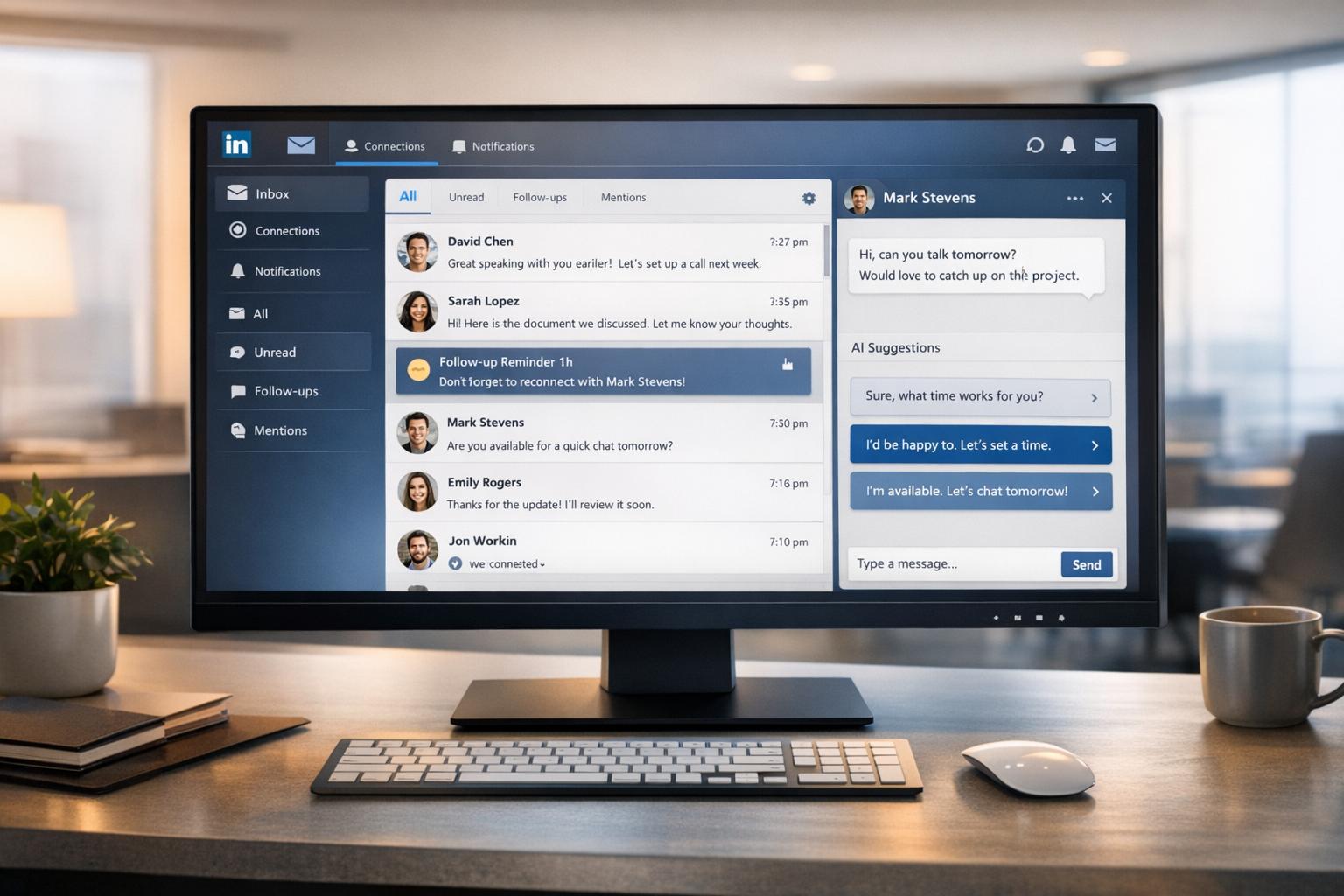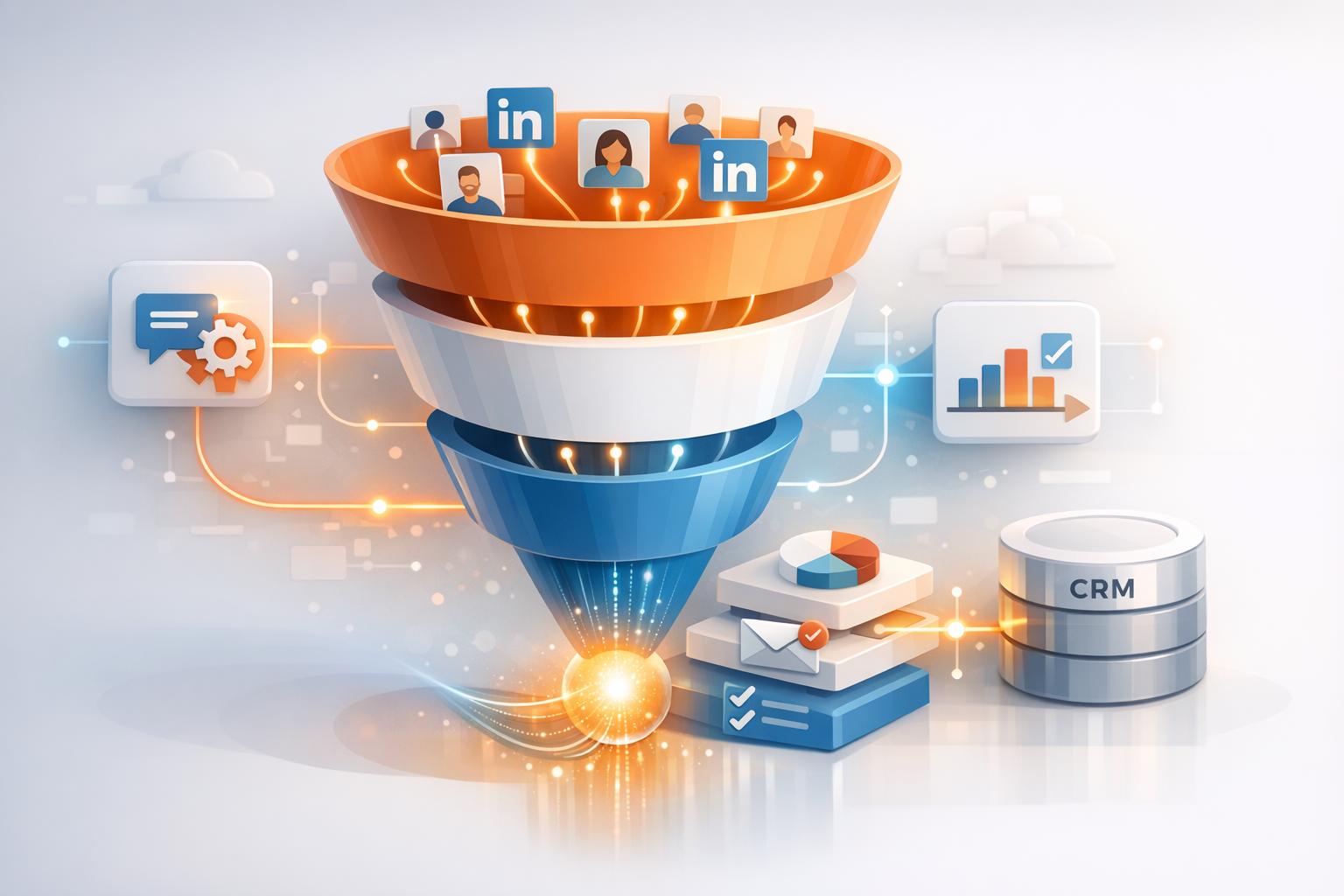
AI-powered sales forecasting transforms how businesses predict future sales by using advanced machine learning models to analyze both historical and real-time data. Unlike error-prone, manual methods, AI delivers precise predictions, reduces human bias, and identifies risks like stalled deals. Companies using AI have seen forecast accuracy improve by up to 50% and administrative workload drop by 30%. Here’s what makes AI forecasting a game-changer:
- Higher Accuracy: Traditional methods average 70-79% accuracy, while AI can achieve up to 95%.
- Real-Time Updates: AI continuously processes live data, adapting to market changes instantly.
- Actionable Insights: AI highlights risks, such as overestimated deals, and suggests next steps.
- Time Savings: Automates data entry, analysis, and reporting, freeing teams for strategic tasks.
- Proven Results: Companies like Danone reduced forecast errors by 20% and lost sales by 30%.
AI technologies like LSTM models, real-time data processing, and ensemble methods are the backbone of these improvements. By integrating AI tools into your CRM and workflows, you can achieve better resource planning, risk management, and revenue predictions. Ready to upgrade your sales forecasting? Start by organizing your data, choosing the right AI model, and piloting small-scale projects.
Enhancing Sales Forecasting Accuracy with AI and Machine Learning
Key AI Technologies That Improve Sales Forecasting Accuracy
Expanding on how AI enhances sales forecasting, let's delve into the specific technologies that make these improvements possible. These tools address the limitations of traditional forecasting by delivering flexible, data-focused insights.
Machine Learning Models for Forecasting
At the heart of AI-powered forecasting is regression analysis, which connects sales outcomes to factors like pricing, seasonality, and customer demographics [5]. Time series models, such as ARIMA (AutoRegressive Integrated Moving Average), analyze historical sales data to uncover trends and recurring patterns. They also adjust automatically for seasonal changes and long-term growth. Neural networks, including Recurrent Neural Networks (RNNs) and Long Short-Term Memory (LSTM) networks, take it a step further. These models are designed to handle sequential data and can identify complex, nonlinear relationships. LSTM networks, in particular, are skilled at recognizing long-term dependencies, such as the lingering effects of past promotions [5]. These tools integrate smoothly into existing processes, making them a practical choice for businesses.
Real-Time Data Processing for Dynamic Forecasting
Traditional forecasting often relies on static historical data, which can quickly become outdated. AI changes the game by using real-time data processing to continuously update forecasts, adapting instantly to shifting market conditions. By analyzing a mix of data streams - such as transactions, customer interactions, website activity, and market trends - AI systems can rapidly refine predictions. This allows sales teams to spot new opportunities before they affect revenue. Additionally, by incorporating unstructured data like customer emails, social media sentiment, and sales call transcripts, AI delivers a fuller picture of market dynamics [5]. Seamlessly integrating this capability into workflows unlocks its true potential.
Improving Accuracy with Ensemble Methods
Ensemble methods combine the strengths of multiple AI models to create a single, more reliable forecast. Techniques like Gradient Boosting and Random Forest address the limitations of individual models by averaging and refining their predictions. For example, one major retailer saw a 28% increase in market share and doubled its profits within three years by adopting AI-driven demand planning powered by ensemble methods. These approaches can improve forecast accuracy by 15–20%, with some systems achieving up to 95%. This directly enhances revenue predictability and optimizes resource allocation [5].
These technologies align well with existing data strategies, paving the way for a detailed implementation roadmap.
Step-by-Step Guide to Implementing AI in Sales Forecasting
If you're ready to bring AI into your sales forecasting, it's time to roll up your sleeves and get to work. With the right approach, you can transform your forecasting process into a data-driven powerhouse. Below, we'll walk through the essential steps to get AI up and running in your organization.
Preparing and Organizing Your Sales Data
AI models thrive on data, but only if that data is clean, complete, and well-organized. Start by auditing all your sales data sources - this includes your CRM, LinkedIn activity logs, email interactions, sales call records, and spreadsheets. The goal is to gather at least two to three years of historical sales data to cover full sales cycles.
Once you’ve collected the data, clean it thoroughly. Remove duplicates, correct formatting inconsistencies, and fill in any missing information. For U.S.-based businesses, ensure all currency amounts use dollar symbols (e.g., $1,250,000) and format dates as MM/DD/YYYY. Keeping data standardized is critical for accurate model training.
Next, structure your data into tables with consistent columns for attributes like deal size, close date, sales representative, product type, lead source, and customer demographics. Segment this data into categories like region, industry, and deal size ranges so the AI can detect patterns specific to different areas of your business.
To ensure accuracy, cross-check your CRM data with LinkedIn activity and email logs. Implement automated data validation routines to flag inconsistencies for manual review. Finally, establish clear data governance policies so your team knows how to maintain high-quality data moving forward.
Choosing and Training the Right AI Models
With your data in order, the next step is selecting the right AI model for your needs. The choice depends on the complexity of your sales pipeline and your forecasting goals. For large, intricate sales processes with varying deal sizes and long cycles, neural networks like LSTM (Long Short-Term Memory) models are a strong choice - they excel at identifying long-term trends and complex patterns. On the other hand, simpler regression models might work well for short-term forecasts, like predicting next quarter’s sales.
To train your AI, split your historical data into training and validation sets. Typically, 70-80% of your data is used for training, while the remaining 20-30% is reserved for testing the model’s performance. During training, the AI learns patterns from the data, and its accuracy is then evaluated on the unseen validation set.
Pay attention to metrics like mean absolute error (MAE) and confidence ranges when assessing model performance. For example, in 2023, Danone used machine learning for its sales forecasting and saw a 20% reduction in forecast errors and a 30% drop in lost sales after training their models on properly cleaned data [3].
Keep your models updated by retraining them regularly - monthly or quarterly - based on how quickly your sales environment changes. Fresh data ensures your AI stays relevant and accurate as market conditions evolve.
Integrating AI into Sales Workflows
To make AI a seamless part of your sales process, integrate it directly into your existing tools. Deploy AI models within your current CRM platform so your team doesn’t have to learn an entirely new system. Many modern CRMs offer API connections, allowing AI tools to automatically pull data and push predictions back into familiar dashboards.
Automate data capture from emails, calendar entries, and collaboration tools to ensure your forecasting models are always working with the latest information. Real-time data keeps predictions accurate and actionable.
Make sure your sales team understands how to interpret AI-generated forecasts. Unlike traditional forecasts that provide a single number, AI often delivers ranges with confidence levels. For example, instead of predicting, "This deal will close for $50,000", the AI might estimate, "$45,000 to $55,000 with 85% confidence." Train your team to use these ranges effectively for pipeline management and quota planning.
Establish feedback loops between your sales reps and the AI system. When deals close differently than predicted, capture that information and use it to improve future forecasts. Sales reps often have valuable insights into customer behavior or market trends that aren’t reflected in historical data, and incorporating their feedback helps refine your models over time.
Automate routine forecasting tasks to free up managers for more strategic activities like coaching and planning. With AI handling the heavy lifting, pipeline reviews can focus on actionable insights rather than manual updates. For example, tools like SalesMind AI can automatically track LinkedIn outreach, lead qualification scores, and follow-up interactions, giving you a more complete picture for your predictions [2].
sbb-itb-817c6a5
Measurable Benefits of AI-Driven Sales Forecasting
Integrating AI into sales processes delivers tangible results. Businesses across various sectors are seeing noticeable improvements in accuracy, efficiency, and decision-making. AI is reshaping how sales teams forecast and manage their pipelines.
Improved Forecast Accuracy and Risk Detection
AI-powered forecasting takes accuracy to the next level, increasing it from the traditional range of 70–79% to as high as 95%. It also enhances risk detection by continuously monitoring pipeline activity[2]. McKinsey research highlights that companies using AI for sales forecasting can improve forecast accuracy by up to 50%[8]. This leap in precision stems from AI's ability to process over 50 variables per deal, far surpassing manual methods.
Advanced tools like neural networks and ensemble methods identify stalled deals or overestimated opportunities before they become issues[1]. Conversation intelligence further refines this process by analyzing sales calls and communications, picking up subtle shifts in buyer sentiment. These insights empower teams to address potential problems early, saving time and effort while boosting overall accuracy.
Time Savings Through Automation
AI significantly reduces the time spent on repetitive tasks. Sales representatives no longer need to manually update spreadsheets or log interactions. Instead, AI tools handle these tasks automatically - capturing meeting notes, summarizing calls, and updating deal stages. This automation leads to up to a 30% improvement in forecasting speed and slashes administrative workloads[4]. With less time spent on manual tasks, teams can focus on strategic activities like analyzing risks and planning actionable next steps.
Enhanced Sales Pipeline Management
AI transforms pipeline management into a proactive and strategic function. By analyzing performance data, AI identifies which sales representatives are best suited for specific deal types, customer segments, or regions.
Beyond identifying risks, AI also suggests actionable next steps, making pipeline management more effective[1][2]. Deal prioritization becomes easier with AI-generated confidence ranges, helping teams zero in on opportunities most likely to close within the desired timeframe. Continuous monitoring of pipeline health ensures any changes in deal velocity, stage progression, or buyer engagement are flagged immediately, enabling managers to intervene promptly.
For U.S.-based B2B sales on LinkedIn, tools like SalesMind AI streamline personalized outreach and lead qualification. By aligning advanced lead scoring with real-time pipeline insights, these tools make targeting and closing deals more efficient[2].
Boosting Forecast Accuracy with LinkedIn Sales Automation
AI has already revolutionized forecasting, but LinkedIn automation takes it a step further by improving the quality of data used for predictions. In B2B sales, LinkedIn has become a key resource, offering high-quality data that enhances forecast precision. With AI-powered LinkedIn automation tools, sales teams can now capture, process, and analyze prospect interactions more effectively. The result? Better data, leading to more dependable sales forecasts.
Using AI for LinkedIn Outreach and Lead Qualification
AI-driven LinkedIn outreach tools are changing the game by automating how buyer interactions are captured. From messaging and profile visits to engagement metrics, these tools eliminate the need for manual data entry, ensuring all interactions are logged accurately and completely [2]. This comprehensive dataset enriches predictive models, giving sales teams a clearer picture of their pipeline.
Automated messaging tools also scale personalized outreach, improving response rates and speeding up lead qualification. They handle follow-ups and track engagement effortlessly, ensuring sales data stays updated in real time [2][1].
AI-powered lead scoring takes things further by analyzing multiple data points to assign a conversion likelihood to each lead [1]. This helps sales teams focus on high-potential prospects, feeding more realistic data into their pipeline. The result? Forecasts that are more aligned with actual sales outcomes [3].
Another standout feature is the unified inbox, which consolidates all LinkedIn communications and responses into one place. This ensures no interaction slips through the cracks, creating a complete dataset for forecasting algorithms to analyze.
The impact of these tools is clear. Companies using AI-driven LinkedIn automation have seen forecast errors drop by 15–20% compared to traditional methods [3][5]. For instance, a B2B SaaS company improved its forecast accuracy from 75% to over 90% after adopting AI-powered outreach and lead scoring. This not only enhanced resource allocation but also optimized revenue planning [3].
These capabilities set the stage for advanced platforms like SalesMind AI.
SalesMind AI: Streamlining Sales Workflows

SalesMind AI integrates LinkedIn automation into sales workflows, offering tools that optimize both outreach and forecasting. It combines automated messaging with an AI-powered unified inbox for managing prospect communication. Advanced lead scoring ensures efficient qualification, while predictive analytics use historical and live data to generate more accurate forecasts. The platform also seamlessly integrates with workflows, capturing all relevant data for forecasting.
SalesMind AI’s personalized messaging uses insights from prospect profiles to create tailored outreach, resulting in higher-quality interactions. These insights feed into forecasting models, delivering richer and more relevant data.
Real-time lead tracking is another game-changer. As new information - like prospect responses or deal status changes - comes in, forecasts are updated instantly. This allows sales teams to adapt quickly to market shifts and buyer behavior [1][6].
The platform also prioritizes top leads through advanced scoring, ensuring the sales pipeline is filled with high-quality opportunities. By reducing irrelevant data, it sharpens forecasting accuracy and helps teams focus on deals most likely to close.
U.S.-Specific Sales Considerations
AI-powered tools like SalesMind AI are built to accommodate the unique needs of U.S.-based sales teams. The platform supports U.S. conventions for currency ($), dates (MM/DD/YYYY), and numbers (comma-separated thousands), ensuring smooth operations and compliance with local standards.
Compliance is crucial, and SalesMind AI adheres to U.S. data privacy laws and industry regulations. This ensures that sales data remains accurate while meeting legal requirements - a must for businesses operating across states with varying rules.
Additionally, the platform integrates seamlessly with popular U.S.-based CRM systems, ensuring LinkedIn-generated data flows smoothly into existing workflows. This prevents data silos, which often compromise forecasting accuracy.
For teams spread across different time zones, SalesMind AI’s time zone management ensures outreach and follow-ups happen at optimal business hours. This improves response rates and ensures prospects engage when they’re most likely to respond.
With these features, U.S. sales teams can expect up to 20% better forecast accuracy, reduced manual data entry, faster lead qualification, and streamlined pipeline management [3][5]. These improvements lead to better risk detection, more reliable revenue predictions, and significant time savings through automation [1][2].
Conclusion and Key Takeaways
AI has turned sales forecasting into a precise, data-driven process, moving far beyond the limitations of traditional spreadsheets. This shift isn't just about adopting new technology - it's about enabling smarter, more strategic planning.
Key Benefits of AI-Powered Sales Forecasting
AI brings a new level of accuracy to sales forecasting by minimizing errors and providing actionable forecast ranges with confidence levels[1]. This means businesses can allocate resources more effectively, plan revenue with greater certainty, and reduce financial risks.
Automation plays a crucial role by handling data collection, analysis, and reporting. This frees up sales teams to focus on selling rather than administrative tasks[2]. With the ability to process massive datasets in real time, AI adapts quickly to shifts in market conditions and buyer behaviors[1].
By offering forecast ranges with confidence levels, AI helps businesses navigate uncertainties in predictions[1]. It uncovers hidden patterns, flags risks like stalled deals or overly optimistic forecasts, and continuously monitors pipeline health. Early warnings about potential issues, such as deals unlikely to close, empower teams to act before problems escalate[1].
With these advantages, implementing AI in your forecasting process is a step toward transforming how your business operates.
Steps to Get Started with AI Forecasting
-
Evaluate Current Methods
Identify gaps in your current forecasting process where AI can add value[2]. Common challenges include poor data quality and reliance on manual processes, which hinder accurate predictions. -
Prepare Historical Sales Data
Organize and clean your sales data as a foundation for AI model training. High-quality, comprehensive data enables AI to detect meaningful patterns and deliver reliable forecasts[7]. This step often uncovers valuable insights into sales trends and buyer behavior. -
Start with a Pilot Program
Begin with small-scale AI projects to demonstrate the technology's reliability. Use this phase to build trust within your sales team and gradually expand AI’s role in your forecasting process[2]. -
Leverage AI Platforms
Platforms like SalesMind AI integrate AI-powered forecasting and workflow automation seamlessly. These tools manage tasks like LinkedIn outreach, lead qualification, and follow-ups while feeding high-quality data into forecasting models. Features such as an AI-enabled unified inbox and advanced lead scoring help maintain pipeline integrity while improving prediction accuracy. -
Refine and Evolve
Continuously update and refine your AI models as new data becomes available. AI improves over time, learning from outcomes and adapting to market changes[1]. Regular updates ensure your forecasts remain accurate and aligned with your business needs.
Adopting AI today positions your company to make smarter decisions, reduce risks, and seize opportunities. Now is the time to embrace this technology and gain a competitive edge.
FAQs
How can AI-powered sales forecasting tools improve CRM performance and boost forecasting accuracy?
AI-driven sales forecasting tools work effortlessly with your existing CRM system to improve both accuracy and efficiency. By digging into historical data, spotting patterns, and using predictive models, these tools deliver more dependable sales forecasts. Plus, they save time and cut down on manual errors.
These tools also handle essential tasks like processing data and analyzing trends automatically. This frees up your sales team to concentrate on strategy and building customer relationships. With features such as advanced lead scoring and tailored insights, AI tools turn your CRM into a game-changing resource for making smarter sales decisions.
How does AI improve sales forecasting compared to traditional methods?
Traditional sales forecasting methods often depend on manual analysis and past performance data. This approach can lead to predictions that are influenced by personal judgment and may lack precision.
On the other hand, AI takes a completely different route. Using advanced algorithms and machine learning, it can sift through massive datasets, identify patterns that might otherwise go unnoticed, and produce forecasts with remarkable precision.
By automating the data analysis process and applying predictive models, AI-powered tools give businesses a clearer view of sales trends. This enables companies to make smarter decisions and respond more effectively to shifting market conditions.
How does AI process real-time data, and how does this improve sales forecasting and risk management?
AI works with real-time data by constantly analyzing and refreshing information as it comes in. This ongoing process helps AI-driven tools spot trends, patterns, and unusual changes right away, ensuring sales forecasts are built on the most up-to-date and precise information available.
Using these real-time updates, businesses can make smarter decisions, cut down on forecasting mistakes, and tackle potential risks before they escalate. This approach not only sharpens the precision of sales predictions but also strengthens risk management by catching issues early and enabling quicker action.


.avif)


